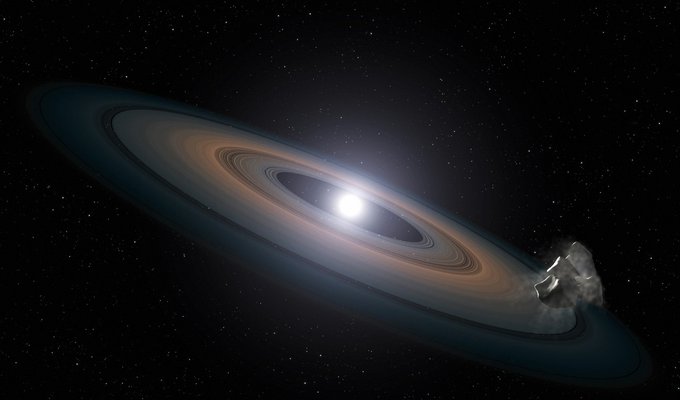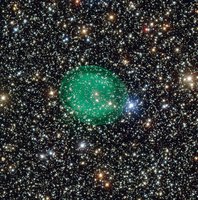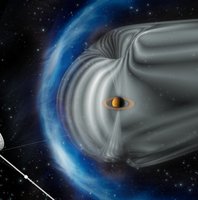The odds are pretty low, but it is possible for life to exist on a planet orbiting a white dwarf. However, the harbouring planet would have to lie extremely close to the white dwarf to be warm enough to hold liquid water. This is because white dwarfs have exhausted all their fuel, and nuclear reactions, which create the massive amounts of heat that “live” stars (like our Sun) give out, no longer occur at their cores.

Like the legendary phoenix (or Fawkes, if you're a Harry Potter fan), a number of Earth-like planets have been spotted rising from the ashes of a pair of burnt-out stars, many light years from our Solar System.
Following the same mythical creatures theme, the stars are known as ‘white dwarfs’. They are the small, dim remains of stars that were once like the Sun. This pair of white dwarfs lies in a young cluster of stars. Before this discovery, searches for planets in clusters have not proven fruitful. Roughly 800 planets are known to exist outside our Solar System, and these are called 'exo-planets'. Of all these alien worlds, only four have been found orbiting stars within clusters like this one!
However, this probably doesn't mean that planets don't form in star clusters. It’s just extremely difficult to spot the tiny, dim planets. Cluster stars are young and highly active and they produce powerful bursts of energy that obscure the finer details of the stellar system. Even in a relatively calm system, spotting a planet orbiting a distant Sun is similar to trying to spot a firefly against a firework display.
Observations show that these particular planets probably get their rocky material from asteroids. The asteroids were probably torn apart by the white dwarfs’ strong gravitational fields (100,000 times stronger than that on Earth!).
The pulverised material would have been pulled into a ring shape surrounding the retired stars. This picture is an illustration of how this would look up close. Within this disc, the rocky debris would collide and stick together, forming larger and larger clumps until eventually a brand new planet is born.


















